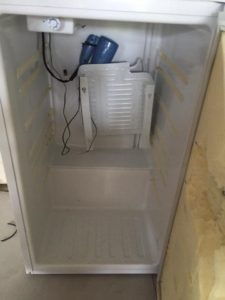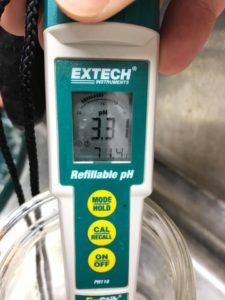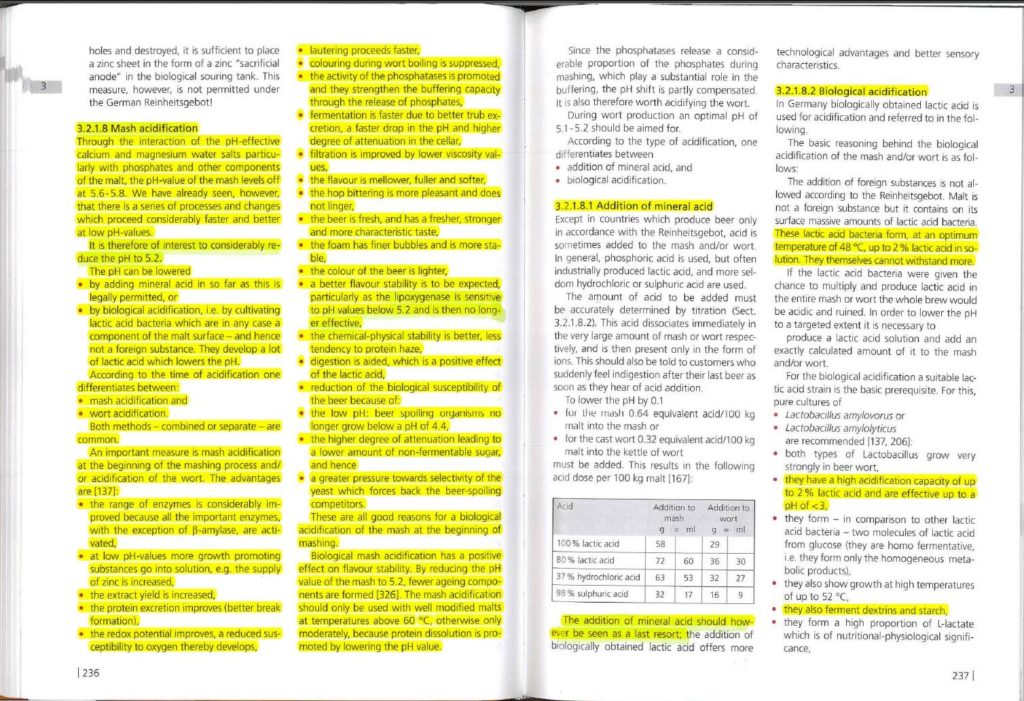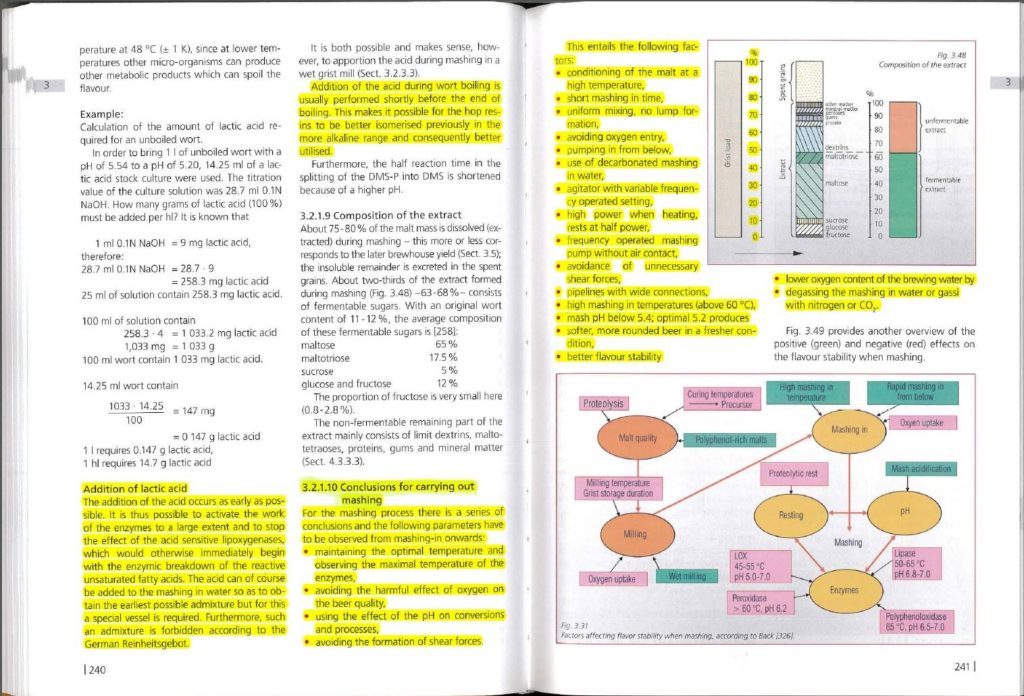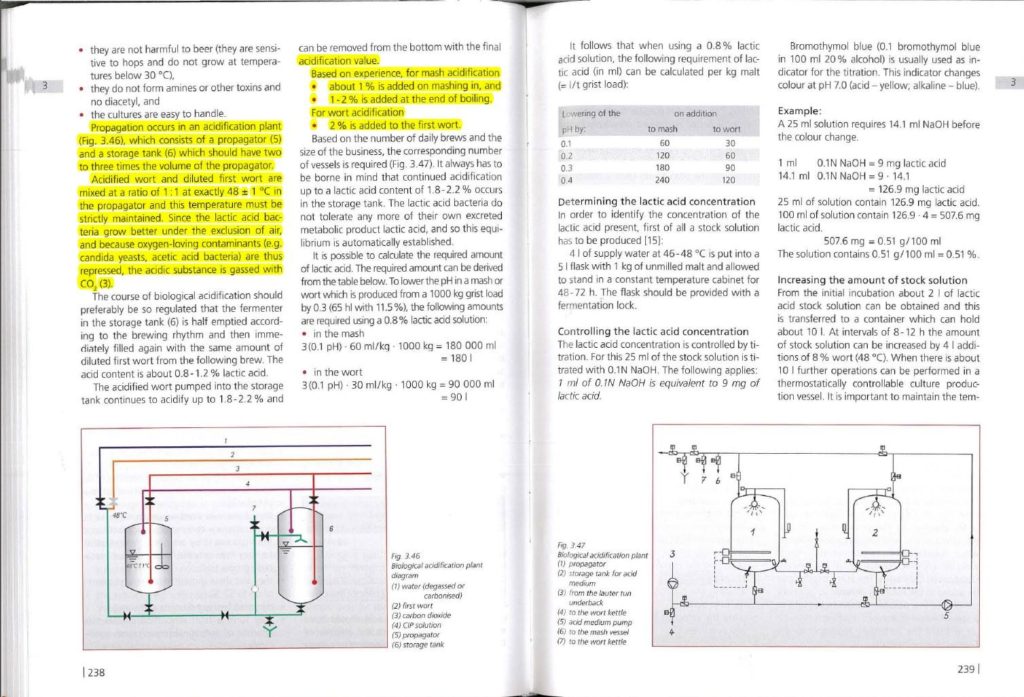
I had some recent discussions with some folks over some VERY fresh Bavarian samples. There were flavors in these beers that I could not replicate exactly, however I had some batches that had hints of it. Looking back through my notes, I noticed the high pH of my Weyermann Barke malts, and how I had to use more acid malt than normal to achieve desired pH values. I then had a revelation after reading Kunze for the umpteenth time. Acid malt = Lacto, Lacto = flavors I was tasting and more Lacto = more flavor. Enter Biological Acidification, i.e. Sauergut.
I am not really one to tip-toe around a subject so I jumped right in. I did a 2 liter low oxygen mini-mash of Pilsner malt with a gravity of 10p (1.040) and did not boil. I then inoculated that with 8 oz. of fresh Pilsner malt, purged that with CO2 and set it in the fermentation fridge at 48 °C for 5 days:
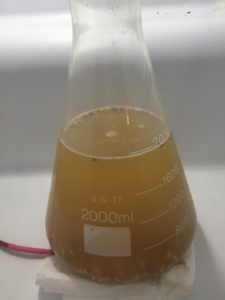
In the meantime, I used an old dorm fridge I had laying around, equipped it with a hair dryer and installed a temperature controller. This then became my Sauergut Reactor:
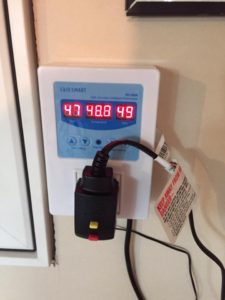
On Day 5 I brewed a full scale batch using the Sauergut as the mash acid. I had observed at pH drop to around 3.5 in the Sauergut, guess-timated acid % and added about 1 liter. This produced a 5.26 mash pH and I then conducted a standard Kunze mash. I then cooled that mash to 48 °C using my herms coil and cold water in the HLT. I acidified the mash with the remaining 1 liter, ran that off into a purged keg and placed it into the reactor at 48 °C.
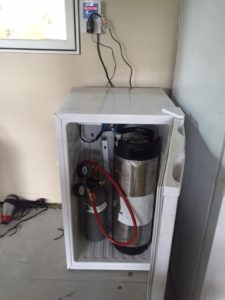
It then sat in the reactor for 5 more days until the next brew. I pulled a sample:
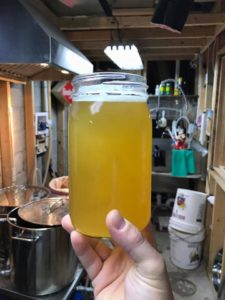
Ran the calcs (titration) and dosed the brew that day hoping for 5.2 mash pH.
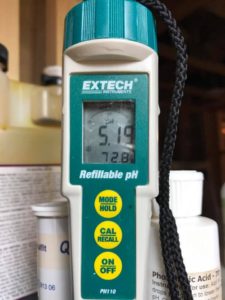
Not too shabby.
I now plan on recovering roughly 2 liters of extra wort per mash which then goes right back into the reactor that is purged and left to sit until next brew.
You could dose mash or boil, or both! As they both have positive effects.
Firstly the Sauergut itself tastes like glorious low oxygen wort tainted with orange juice. Sauergut is the sole creator of the grape flavor in these beers (grape, grape koolaid, yogurt, tang). When added to the mash it has great acid AND oxygen buffering capabilities. pH will lock in and you will have much better oxidation protection, so much infact, that I only consume 10 ppm sulfites from my dough in until I pitch yeast (and that is with a cold trub separation process). The host of other benefits are outlined in various sections in Kunze.
When added to the boil as a knock out addition, you add more grape, but you also get a beautiful fresh wort aroma and flavor that carries over into the finished beer. You know the commercial beers you taste this fresh wort in are using a knockout addition of Sauergut. Paulaner Pils and Andechs Vollbier Hell, in particular, are some really nice examples of the power of Sauergut, as they have these flavor notes galore.
If you chose not to use the Reactor method, the only thing different would be the refilling of the mash runnings, otherwise all should be the same. Personally I would hold 48c until the acid % maxes out (2%), because if it is not there the LAB stall have work to do!
Some excerpts from my stash.
Procedure for measuring g/L Lactic Acid in beer using a 0.1 N sodium hydroxide solution. First get your solution here.
1. Draw 10ml of beer into the pipette and transfer it into the
beaker.
2. Add 90ml of distilled water to beaker and place the stir bar in the
beaker.
4. Place the beaker on the stirrer plate (if available). If not make sure you mix well.
5. Turn the stirrer on.
6. Fill the 10ml pipet with 0.1 N sodium hydroxide solution.
7. Titrate the beer sample while watching the pH meter.
8. If needed, refill the 10ml pipet with .1NaOH solution making sure to
quantify portion used.
9. Stop the titration when the pH meter reads 8.2.
10. Multiply ml of NaOH used in titration by .9 to read grams/Liter
Lactic Acid.
Parts per million (ppm) = mg/L
.1g/100mls = 1gram/L = 1000ppm = .1%
10,000 ppm = 1%
A video of how I recharge the reactor:
